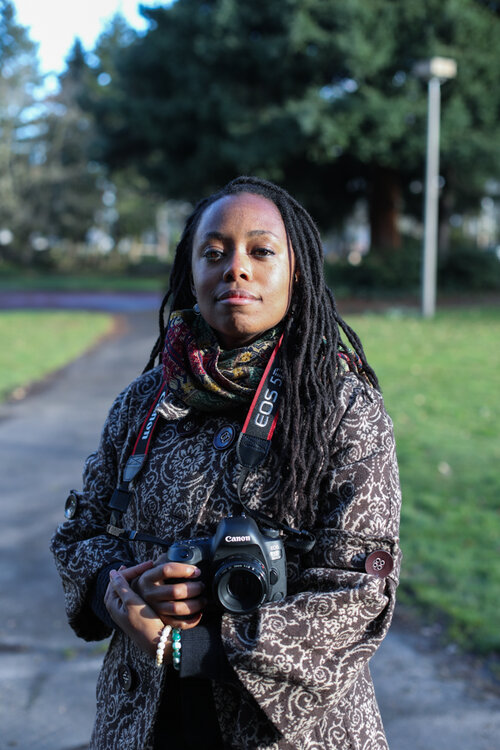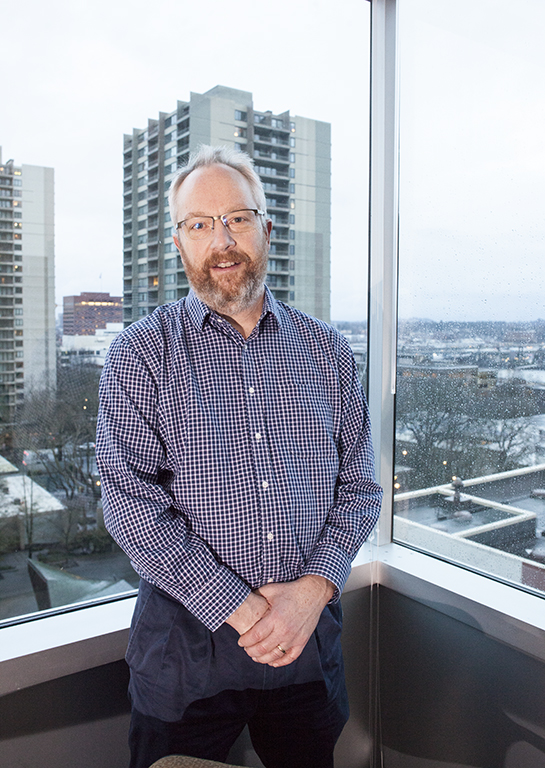In 1986—the year Halley’s Comet was first observed by a spacecraft—a star was born: Intisar Abioto, whose photographs have garnered their own sphere of influence since the artist moved to Portland back in 2010.
“It’s not just about the photographs,” Abioto said at a recent lecture hosted by the King School Museum of Contemporary Art (KSMoCA) earlier this month. “It’s about the engagement and the conversations you can have with people, and then how those conversations influence how you see the world.”
During the hour-long livestream, Abioto invoked stories mined from her own life. These stories influenced her work heavily. “Photography is a work of detail and intention,” Abioto said. “[It’s about paying] attention to the tiny details and letting them flow into your body and your mind, and [then you] interpreting it. It’s powerful.”
Throughout the artist talk, Abioto’s words were devoid of condescension as she addressed the diverse audience as if it were one—regarding the individuals in both elementary and college classes as being engaged in the universal struggle of finding one’s voice.
“Think about finding the stories where you are, because they’re going to be so valuable to you later,” she said. “We’re carrying our own story, carrying the dreams that we dream at night and the dreams that we wish for our lives. We also carry the dreams of so many people before us and our community members.”
For Abioto, tuning into personal stories is a way to access collective experience. “I’m interested in art as a way to make space and [to better] the communities [we] live in,” she said.
Growing up in Memphis, the role that art plays in community empowerment comes naturally to Abioto. When she first moved to Portland, she landed in the Alberta district before it was an “arts district”—before the gentrification and the “purposeful history of moving Black Portlanders out of their communities,” as Abioto put it, afflicted the neighborhood en masse.
“Being someone of African descent who comes from a family of Black people who were brought here as slaves, I think a lot about Black history and culture,” Abioto said. “And so when I came here, I didn’t really understand what [Black culture looked like in Portland] because I wasn’t from here.
And one way I began to find out was [by taking] my camera, and talking to Black Portlanders that I met on the street.”
Abioto’s photos from the last year are not wrapped in or informed by the tired tope of nostalgia. The photos are concerned with the present tense, but we look because we can feel the magic—the magic from an awareness that what we are doing will matter in a future moment. “I think about these pictures and how they’ll be important to us in the future,” Abioto said.
The process of making art and documenting it is central to KSMoCA and PSU’s Social Practice MFA program that coordinates it. Founded by professors Harrell Fletcher and Lisa Jarret, the museum inside an elementary school emphasizes collaborations between young people and contemporary artists. Their stories—which inevitably permeate the art they create—are how these young people touch the world. “Paying attention to the stories around you and the people around you—it’s never unimportant,” Abioto said. “This is how I love my community, by paying deep attention and holding on to these words and sharing them with you all so that we can see and feel how valuable and important we are.”






